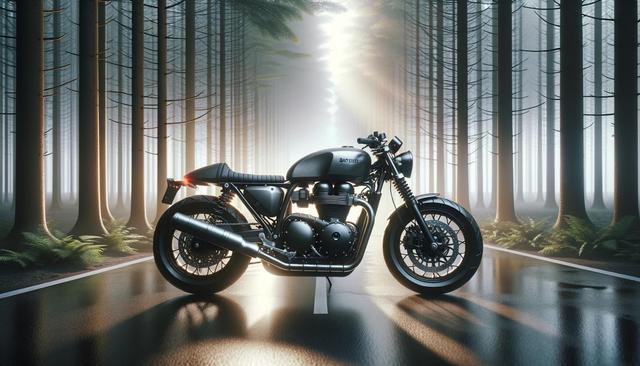The History and Evolution of Motorcycles
The journey of motorcycles dates back to the late 19th century, when inventors began experimenting with motorized bicycles. Over time, these early prototypes evolved into the powerful and stylish motorcycles we see today. Initially designed for basic transportation, motorcycles have become icons of culture, freedom, and innovation. Milestones in their development include the introduction of two-stroke and four-stroke engines, better suspension systems, and advanced safety features. From simple single-cylinder machines to modern high-performance bikes, the motorcycle industry has grown to accommodate various types and preferences.
Throughout the decades, motorcycles have played significant roles in military, sport, and everyday life. They were used extensively in both World Wars for communication and transport. In the post-war era, motorcycles became symbols of rebellion and independence, featured prominently in films and pop culture. Today, they appeal to a broad demographic, from daily commuters looking for fuel efficiency to enthusiasts chasing thrill and adventure.
Types of Motorcycles and Their Uses
Motorcycles come in a variety of styles, each tailored to specific needs and riding conditions. Understanding the different types can help new riders choose the right one for their lifestyle. Here are some common categories:
- Standard: Versatile and user-friendly, suitable for beginners and city commuting.
- Cruiser: Known for comfort and style, ideal for long, relaxed rides.
- Sport bike: Built for speed and agility, popular among performance-oriented riders.
- Touring: Designed for long-distance travel with ample storage and comfort features.
- Dual-sport/Adventure: Capable of handling both on-road and off-road terrains.
Each type offers a different experience in terms of comfort, handling, and performance. Choosing the appropriate motorcycle depends on factors such as intended use, rider experience, and personal preference. Whether navigating urban streets or exploring rugged trails, there is a motorcycle designed to meet almost every need.
Essential Gear and Safety Considerations
Riding a motorcycle requires more than just skill; it demands proper safety gear and awareness. Unlike cars, motorcycles offer minimal protection, making it crucial for riders to equip themselves appropriately. Key safety gear includes:
- Helmet: The most critical piece of safety equipment, reducing the risk of head injuries.
- Jacket and pants: Typically made of abrasion-resistant materials like leather or textile.
- Gloves: Provide grip and protect the hands from injury.
- Boots: Offer ankle support and protection from debris and heat.
In addition to wearing the right gear, riders should stay updated with local traffic laws and practice defensive riding. Taking a certified motorcycle safety course is highly recommended, especially for beginners. These courses teach valuable techniques, such as emergency braking and hazard avoidance, which can significantly improve a rider’s confidence and safety on the road.
Maintenance and Care for Longevity
Regular maintenance is vital to keeping a motorcycle in optimal condition. Unlike cars, motorcycles often require more frequent checks due to their exposed components and high-revving engines. A consistent maintenance schedule ensures better performance, safety, and durability. Key maintenance tasks include:
- Checking and changing the oil regularly.
- Inspecting tires for wear and maintaining proper pressure.
- Lubricating the chain and checking tension.
- Monitoring brake pads and fluid levels.
- Ensuring lights and indicators are functioning properly.
Many riders choose to perform basic maintenance themselves, which can be both cost-effective and rewarding. However, for more complex issues, it’s advisable to consult a professional mechanic. Keeping service records and following the manufacturer’s maintenance recommendations can extend the life of the motorcycle and enhance riding safety.
The Community and Culture of Motorcycling
One of the most rewarding aspects of motorcycle ownership is becoming part of a global community. Motorcycle culture is rich with traditions, events, and camaraderie. Riders often participate in group rides, charity events, and rallies that bring together enthusiasts from diverse backgrounds. These gatherings are more than just social— they foster a sense of belonging and shared passion.
Motorcycle clubs and online forums provide platforms for sharing knowledge, experiences, and tips. Whether it’s discussing the latest gear, planning cross-country tours, or troubleshooting mechanical issues, these communities offer invaluable support. Moreover, the motorcycling lifestyle encourages exploration and mindfulness, as riders often find joy in the journey as much as the destination.
For many, motorcycling becomes more than a mode of transportation—it becomes a way of life. The sense of freedom, connection with the environment, and the thrill of the open road are experiences that continue to draw people to two wheels year after year.
Conclusion: Embracing the Motorcycle Lifestyle
Motorcycles are much more than machines; they represent personal freedom, adventure, and community. Whether you’re a new rider curious about the possibilities or an experienced motorcyclist seeking deeper engagement, embracing the motorcycle lifestyle offers a rewarding journey. From choosing the right bike and gear to staying safe and connected with fellow riders, every aspect contributes to a fulfilling experience. With the right preparation and mindset, the world on two wheels opens up countless paths to explore and enjoy.




Leave a Reply